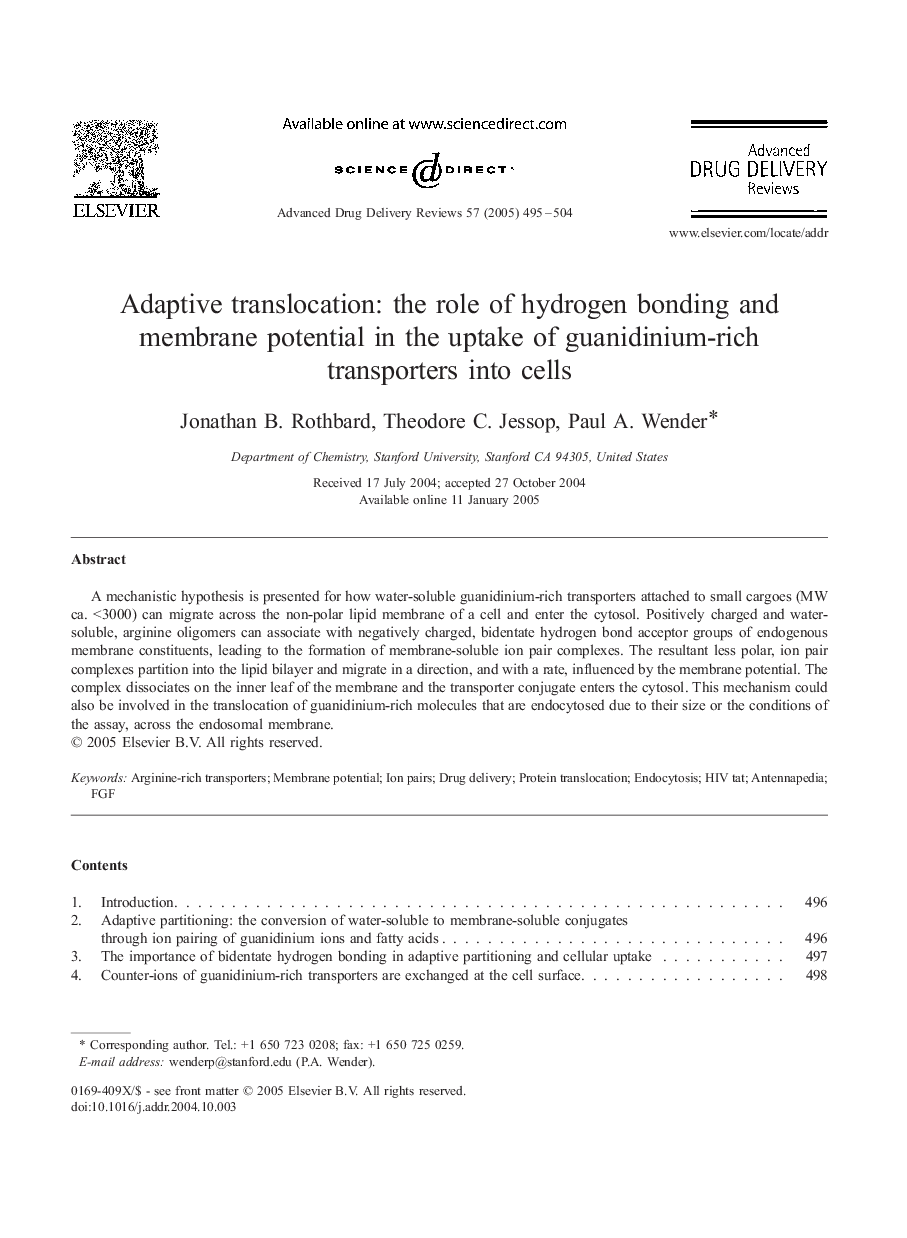| Article ID | Journal | Published Year | Pages | File Type |
|---|---|---|---|---|
| 10884000 | Advanced Drug Delivery Reviews | 2005 | 10 Pages |
Abstract
A mechanistic hypothesis is presented for how water-soluble guanidinium-rich transporters attached to small cargoes (MW ca. <3000) can migrate across the non-polar lipid membrane of a cell and enter the cytosol. Positively charged and water-soluble, arginine oligomers can associate with negatively charged, bidentate hydrogen bond acceptor groups of endogenous membrane constituents, leading to the formation of membrane-soluble ion pair complexes. The resultant less polar, ion pair complexes partition into the lipid bilayer and migrate in a direction, and with a rate, influenced by the membrane potential. The complex dissociates on the inner leaf of the membrane and the transporter conjugate enters the cytosol. This mechanism could also be involved in the translocation of guanidinium-rich molecules that are endocytosed due to their size or the conditions of the assay, across the endosomal membrane.
Keywords
Related Topics
Life Sciences
Biochemistry, Genetics and Molecular Biology
Biotechnology
Authors
Jonathan B. Rothbard, Theodore C. Jessop, Paul A. Wender,
